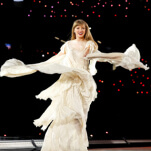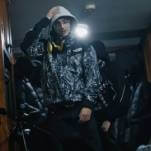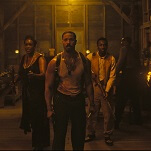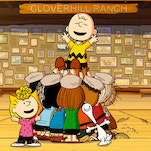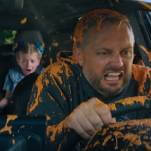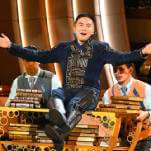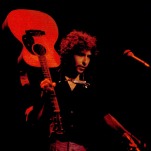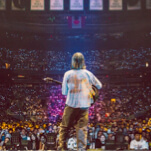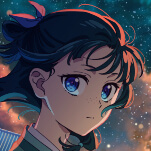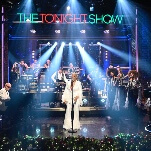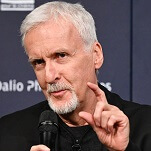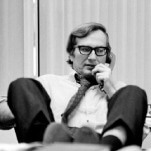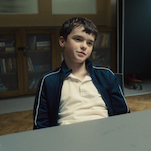A beginner’s guide to dance-music godfather Giorgio Moroder

Giorgio Moroder 101
Throughout the 1970s and ’80s, there were few artists as in-demand as Giorgio Moroder, an Italian record producer who would go on to write a plethora of hits and win a handful of Oscars for his work in film, along with a couple of Grammys to boot. Moroder made his name in electronic dance music, producing and co-writing massive hits for the likes of Donna Summer, Blondie, Berlin, and Kenny Loggins. He was an EDM star before such a label really existed. In 2015, EDM is a capitalist juggernaut, the soundtrack of millennials with disposable income, allowing DJs like Skrillex, Deadmau5, David Guetta, and Avicii to sell out huge arenas, small European clubs, and play sprawling festivals dates. It wasn’t that long ago that festivals were completely turned off by DJs, EDM, and club culture, a symptom not only of early ’90s scare tactics in regard to raves and drug use, but also because of the ever-lingering rockist notion that electronic music isn’t “real” music because it doesn’t involve playing an instrument.
Such a view of EDM still persists to this day, but not nearly with the same fervor. It’s understood that DJing and producing electronic music boasts its own set of skills and proficiencies, and much of that change in attitude has to do with the trailblazers that worked to legitimize electronic music. Moroder, while never really a DJ, is one of those names. His influence across decades of pop-music history is monumental and extends well into the 2000s, as proven by his Grammy-winning collaboration with Daft Punk on Random Access Memories and the release of his latest studio album at the age of 75.
The easiest entry into Moroder’s vast body of work is his earliest collaborations, those songs he wrote and produced that helped define disco while planting the roots of house music. By far his most definitive statement, Donna Summers’ “Love To Love You Baby” was a massive hit in 1975. Not only did the song help cement disco as a commercial force in America, but it also had a lasting impact on the direction of electronic music. Moroder’s original cut of the song, which clocks in at 17 minutes, is a precursor to the extended jams of house music that would become popular in the ’80s and ’90s. From the four-on-the-floor beat to all the synthesized elements of the arrangement, “Love To Love You Baby” is a classic of the disco era and an important part of the history of electronic dance music.
Of course, Moroder had a number of massive collaborations. He continued his focus on disco by producing a hits, including Donna Summer’s take on “MacArthur Park” in 1978, a record that was certified Gold in the United States. Disco was fleeting though, considered dead before the end of the ’70s. Still, the synthesized, mechanical sound lived on throughout the late ’70s and much of the ’80s, both in more underground electronic music genres and in mainstream pop music. Moroder’s contributions as producer on Sparks’ 1979 album No. 1 In Heaven helped bring that band back to relative notoriety and spawned the infectious hit “The Number One Song In Heaven.” Then of course there was “Call Me” by Blondie, which Moroder produced. Moroder and Blondie mixed disco elements with more rock-leaning guitar leads. It was far removed from Moroder’s more synthesized compositions, but suggested that Moroder was more than just a disco producer. He had an ear for melody, harmony, and structure, something that would make him a sought-after composer in the world of film.
Intermediate Studies
Moroder’s film work is some of his most hypnotic and dynamic of his career. His most celebrated score was for the 1978 film Midnight Express, for which he won an Oscar in 1979. Much like his disco productions, the score was filled with lengthy synthesizer jams and arpeggio melodies. “Chase” is dreamy but energized, “Love’s Theme” melancholic and laden with piano and strings. “Theme From Midnight Express” might be the best of the bunch, a dark and seductive instrumental that clearly influenced the work of Cliff Martinez on Nicolas Winding Refn’s Drive and boasts a striking similarity to the 2010 track “Nightcall” by Kavinsky and Lovefoxxx, which was featured during Drive’s opening credits.
Much of Moroder’s film work has that distinctive ’80s sound, the kind that most people who didn’t experience the ’80s can still immediately place within the era. “Palm Springs Drive” from the American Gigolo soundtrack is all screaming guitars and jumpy synths and boasts a melody that echoes the title track, an extended eight-minute version of Blondie’s “Call Me.” Elsewhere, Moroder went moodier and colder with the score for the erotic thriller Cat People. There’s the drawn-out, sparse intro to the David Bowie featuring theme “Cat People (Putting Out Fire)” that leads into a harsher, more aggressive version of the synth-rock that Moroder produced with Blondie, as well as more melancholic cuts like “Leopard Tree Dream” and “The Myth.” Perhaps nothing is darker than “Tony’s Theme” from Scarface though, where Moroder crafts an ominous melody that perfectly encapsulates the corrupt nature of the American Dream that’s at the heart of the film.

